
Conversation

🥳 Feedback Received!
Thanks for taking a moment to share your thoughts — it genuinely helps us make each chapter sharper.
What happens next:
- Your feedback goes straight to our product team.
- We’ll use it to refine lessons, clarify examples, and make the program even more useful.
Appreciate you helping make this program better for everyone.
Ready for your next challenge? 👇
Post Content That People Engage With
As you're acquiring followers and connections, you should regularly post quality content.
LinkedIn posts get a lot of exposure
LinkedIn is a high-commitment channel that requires persistence. The most influential LinkedIn creators each dedicate 30+ minutes per day to it. This isn’t a second-tier consideration; your team needs to treat this like running a second blog.
Since LinkedIn is a content deficient platform—more demand than supply—you get more reach than you do on other platforms.
As a result, LinkedIn posts:
- Stay on feeds longer: The post visibility algorithm has a slow decay, meaning your content will linger in feeds for days. Top audience builders on LinkedIn report that posts build steam 48-96 hours after they're posted. And they can sustain continuous engagement for up to a month.
- Reach people far outside your immediate network—even if they don't go viral. When a person in your network comments on your post, it shows the post in their own audience's news feed.
As a result, LinkedIn posts routinely get more views than they would on other platforms—assuming the same follower/connection count.
For example, Neal's LinkedIn post below was viewed by almost 550,000 people. He only had 7,000 followers at the time. That's a massive advantage over other social media platforms that limit impressions to a portion of users who follow you.

We'll walk through engineer posts to get reach like this.
The optimal posting strategy
LinkedIn's news feed algorithm promotes people who:
- Frequently post high-engagement content.
- Spark conversations in the comments section and reply to people asking questions.
Specifically, you want to build an audience that admires your insights and perspective, and also feels compelled to chime in.
Your goal, therefore, is to have a steady stream of relevant insights injected into your posts.
Ideas become insights when they hit the following criteria:
- Novel—is this idea new or is it at least a fresh take on an existing idea?
- Actionable—can my audience immediately act on the idea?
- High-leverage—when my audience acts on the idea, can it meaningfully change their work or their lives?
Insights are rarely brand new, but they're recycled and repurposed from others. We suggest sourcing insights by:
- Consuming content from thought leaders in your area of expertise: sign up for newsletters, curate your social media feeds, and listen to valuable podcasts.
- Connect with the brightest minds in your field and consistently work through cutting-edge techniques and solutions to the largest problems impacting the field—for example, we chat with other top growth agency founders to trade learnings at least once a month.
How to structure viral posts
This is the most important section of this playbook.
We'll show you the types of posts that get you the most reach on LinkedIn. And then give you examples so you can replicate these for yourself.
We identified these themes by interviewing top LinkedIn influencers, reverse engineering viral posts, and experimenting on our own LinkedIn accounts.
Viral posts fall into two themes
There are two post themes that get traction on LinkedIn: industry-focused and human-focused.
Industry-focused posts are insight-driven pieces of content that cement your position as a thought leader in your industry. This theme should be your priority.
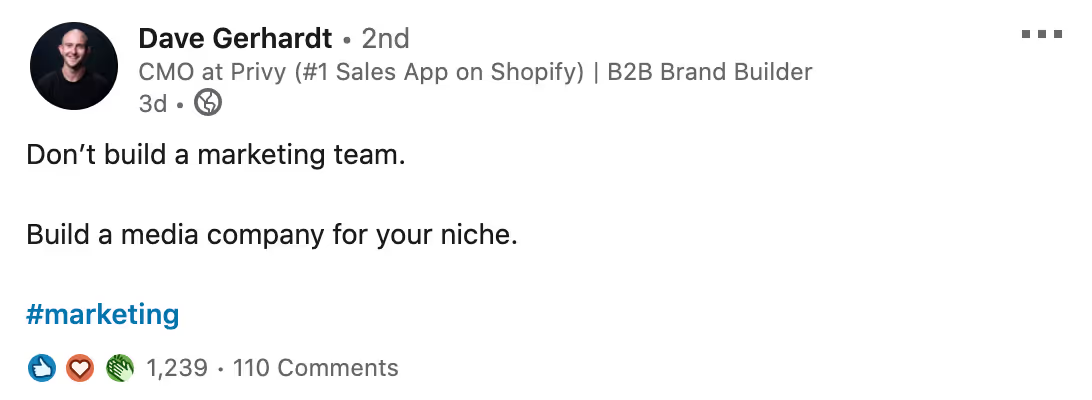
Compare that to human-focused posts, which are posts that do not relate to your industry. The goal of human-focused posts is to connect with your audience on an emotional level. This is achieved through storytelling and vulnerability.
We see top influencers use human-focused posts for about one-third of their total post volume.
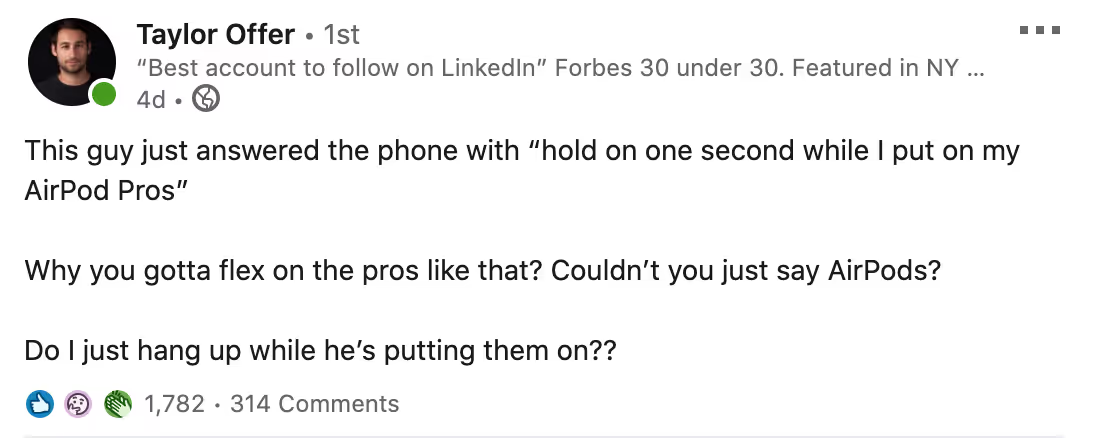
The combination of these two post themes is what builds a high-affinity audience: your posts provide industry insight and a relatable human touch.
Post structure
There are three post structures that pair with the two post themes:
- Pure text
- Resources
- Stories
We'll break down each then we'll dive into examples.
Pure text
Pure text posts include only text.
We've found that it's best to stick to one or two-sentence paragraphs in your posts. Avoid long paragraphs at all costs.
That's because about 60% of LinkedIn traffic comes through mobile, and short, punchy copy reads much better on mobile due to the small screen size. It also breaks up the copy and makes it more inviting to read.
Here's how to make text posts work:
- Lead with a hook: LinkedIn truncates posts so that only your first two sentences show on the feed. After that, people need to click to read more. So it's critical to include a hook in your first two sentences that motivates readers to click.
- Add context
- End with a zinger
Hooks generally follow the format of asking a tantalizing question or implying something controversial that isn’t fully revealed until they click "see more." Here are a few examples of hooks that work well:
- An unbelievable statistic or quote
- A startling failure you experienced
- Stating that the status quo is wrong
- A self-evident description of a useful resource, e.g. "My favorite tools for creating landing pages are..."
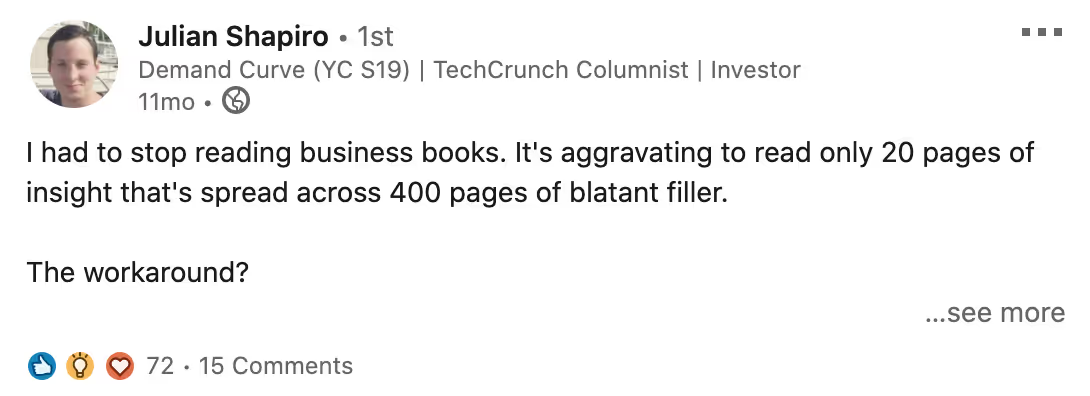
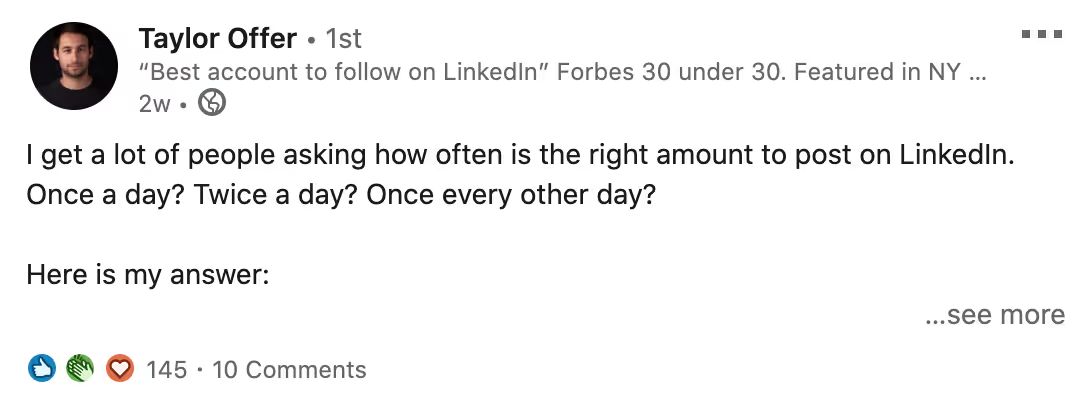

After the hook comes the context. This sounds obvious, but many LinkedIn posts fail to catch on because they lack the context that properly sets up the zinger.
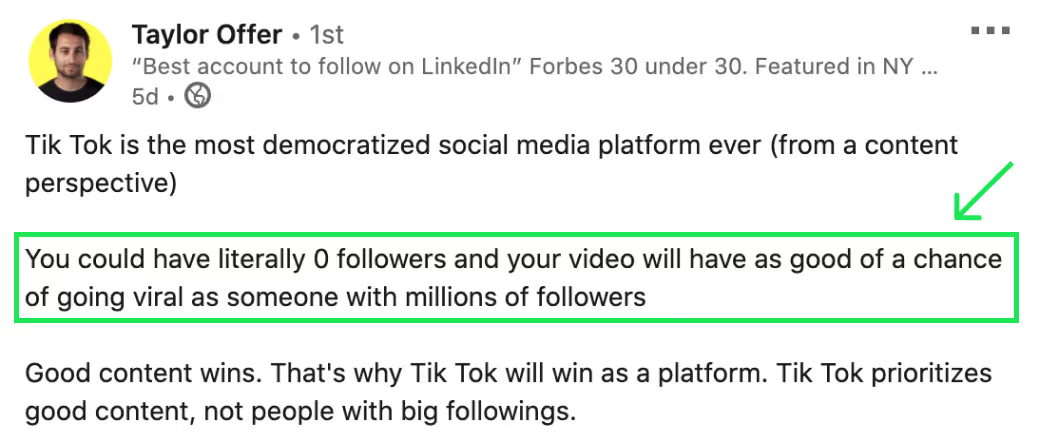
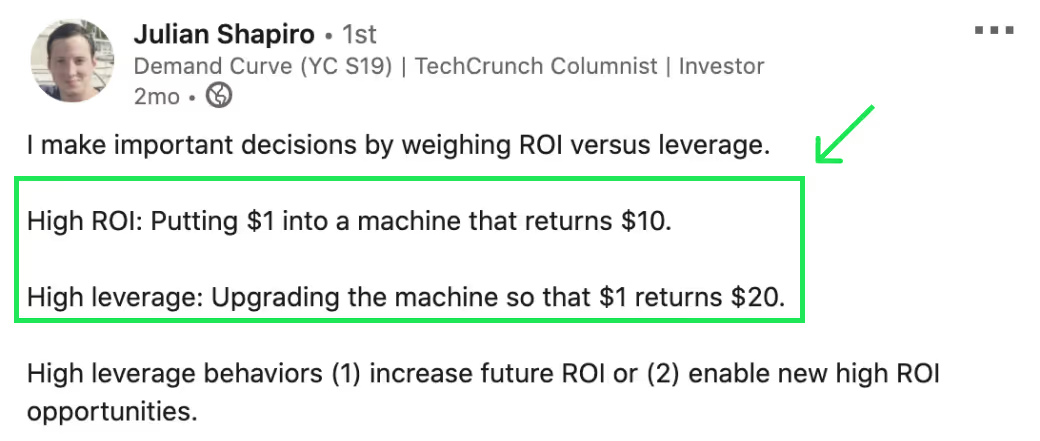
Then finish the post with a zinger—an insight bomb.
The best zingers are elegant statements that leave the reader with something to think about. This is what gets people to hit the like and share buttons.
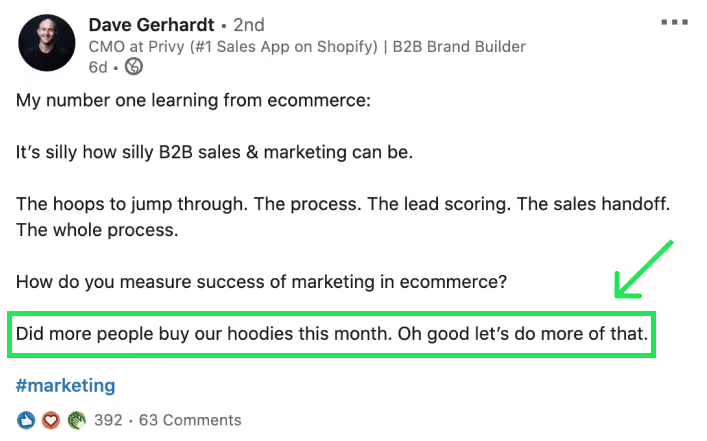


Resource posts
Resource posts follow the exact same structure as pure text, with one small difference. Instead of ending with a zinger, you attach a media asset to your post.
It looks like this:
- Hook
- Context
- Asset
Two examples include thematic image galleries (multiple images that show examples of a topic) and infographics/spreadsheets with useful data.


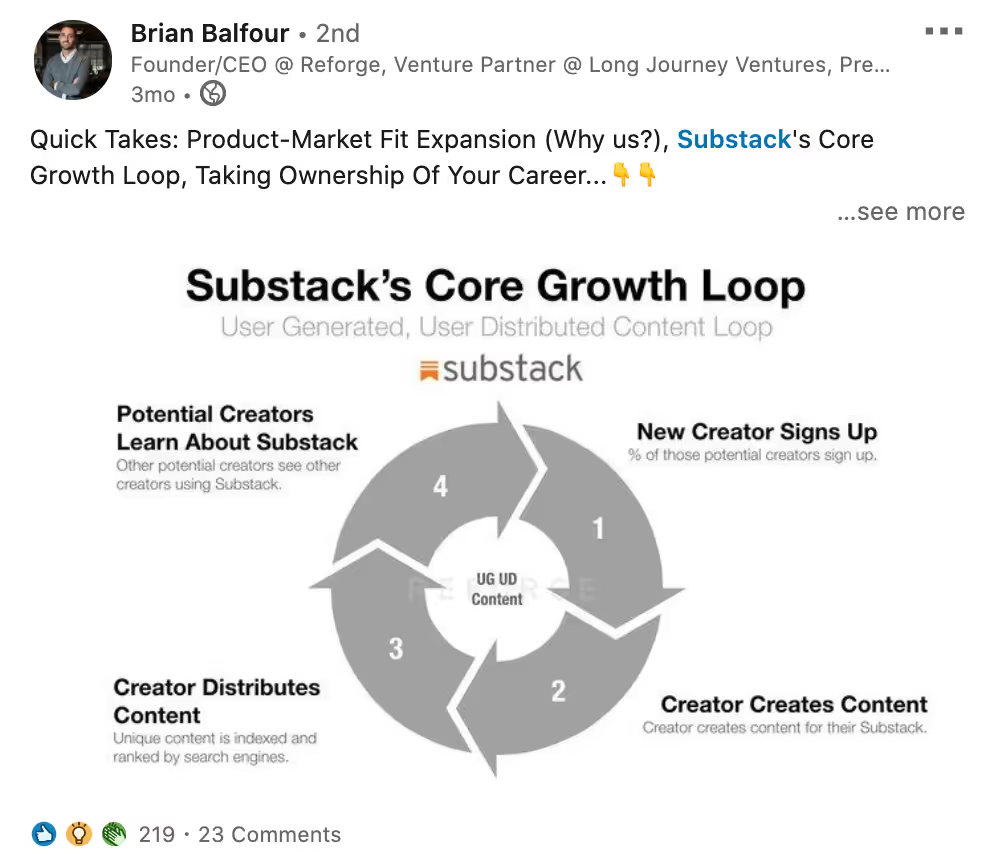
The image asset is the insight—it's what provides a dopamine hit for your audience.
Top LinkedIn users recommend using a thematic gallery when you're trying to show your audience useful examples—things that they can replicate. Think infographics and spreadsheets.
Story posts—a human-focused approach
Adding stories to you content mix is critical for virality.
Why?
They're human. It makes people build affinity toward you—to see you as more than a corporate stooge.
Story posts also do something special: they build trust. When you tell vulnerable stories, you let people empathize with you. And believe in your authenticity.
So how do you write a good story post? Try:
- A lesson you learned the hard way
- A funny encounter you had
- Poke fun at an ironic way people do things
- Stories about challenging yourself
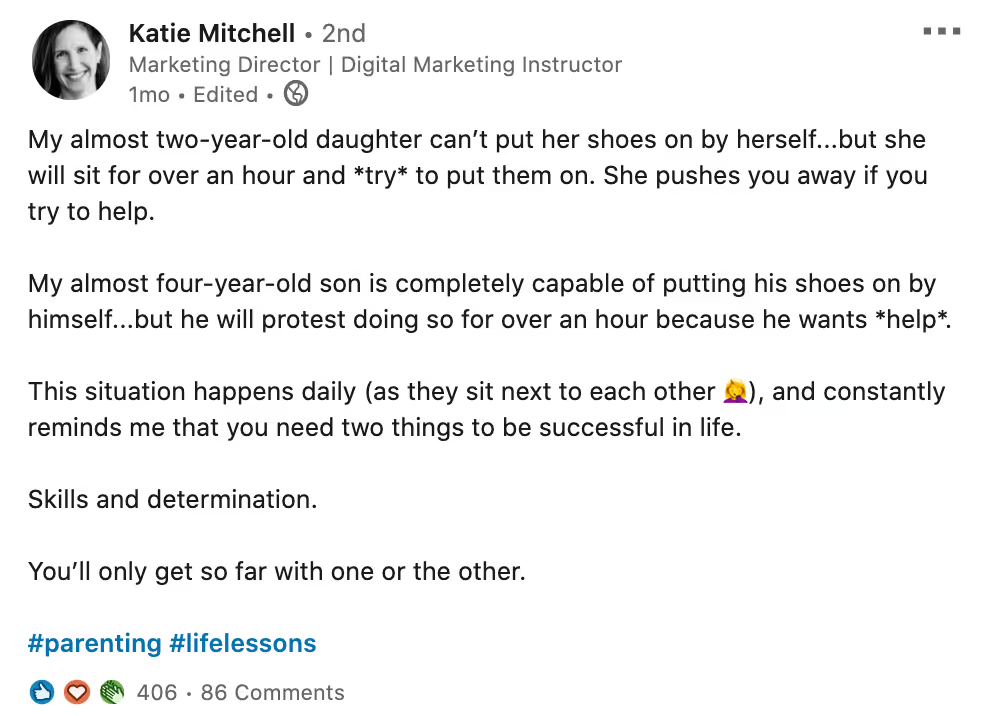

Final touches on your posts
Insight: Connect with people who like your post
When you make it a priority to continuously post quality content, you'll have LinkedIn users outside of your immediate network like and comment on your posts.
Tip: send connection requests to all of these people. They're likely to accept your request since it's top of mind for them. They'll also feel valued since you took the time to notice their engagement and follow up by connecting.
Ask for comments
Always prompt readers to leave comments. Comments are the number one signal LinkedIn measures to boost your post’s public exposure beyond your existing audience. LinkedIn prioritizes content where conversations are happening.
And, as a reminder, when a commenter comments, their followers will often see their comment. Through our research, we've found that getting comments can 4x your post's view count.
Here are a few ways to ask followers for comments:
- “Leave a comment below if you recommend another resource.”
- “How often does this happen to you? Respond here and let me know.”
- “Do you have any stories like this of your own?”
- “What hacks do you use for accomplishing X?”
When people comment, respond to further encourage conversation. Also tag popular people in your network to chime in, answer in-depth, and ask even more questions. The more conversations you have in the comments, the more reach you can see.
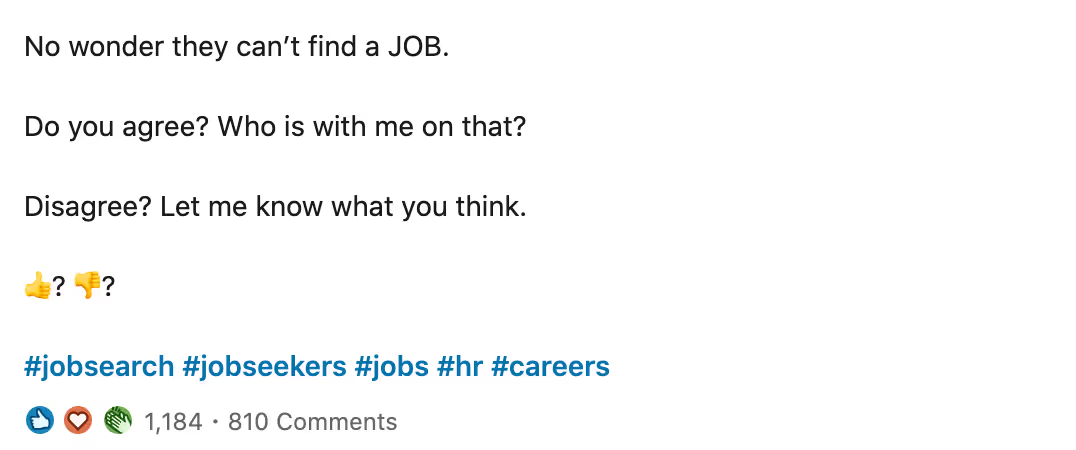
Insight: Should you include links in your post?
We used to recommend that people avoid including links in your posts.
Why?
LinkedIn’s algorithm used to penalize you for sending people off of LinkedIn.
But it has been reported (and widely discussed) that, in May 2020, LinkedIn made a change to the algorithm, and linking away from LinkedIn is no longer penalized.
But it's important to remember that the algorithm favors content that gets lots of likes, comments, and shares. If you link off-platform, you run the risk of people clicking your link and not engaging with your content on LinkedIn. Their engagement modality shifts.
While it's helpful to drive people to your own site, if your post fails to get likes, comments, and shares, it will reach fewer people.
So link as you wish—so long as your posts are still designed to get strong engagement on the platform.

Insight: When to post
The algorithm works against you if you don't post often.
If you go 28 days without posting, you'll get so heavily demoted in the feed that your next post will only be seen by a small percentage of your connections.
Further, posting at the right versus wrong time of day easily triples your reach.
You want to post at times where most of your LinkedIn followers are active. This typically means around 8:30am in the time zone of the majority of your audience. We've tested this heavily.
Complementary strategy: Commenting
The LinkedIn experts we interviewed recommend commenting on other influencers' posts. If their posts get millions of views and you have the top comment, you get many of those views too—which equates to more exposure and followers for you.
Try to comment on 2-3 posts per day. That way people see your insightful comments all over the place—plus those LinkedIn influencers will be more likely to comment back on your posts, which shows your content in their audiences' feeds and drives up your views.
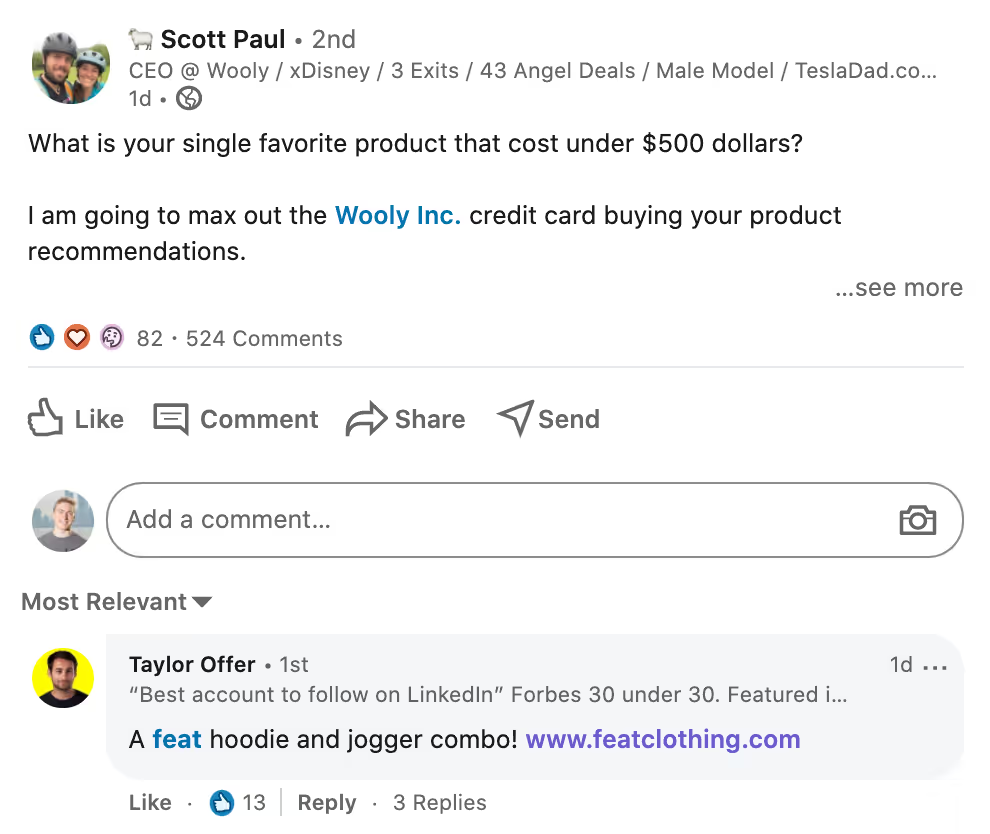
Commenting is also a way to test what to post: if one of your comments receives a lot of engagement, turn it into a full-fledged post of your own. Repurpose your work.


